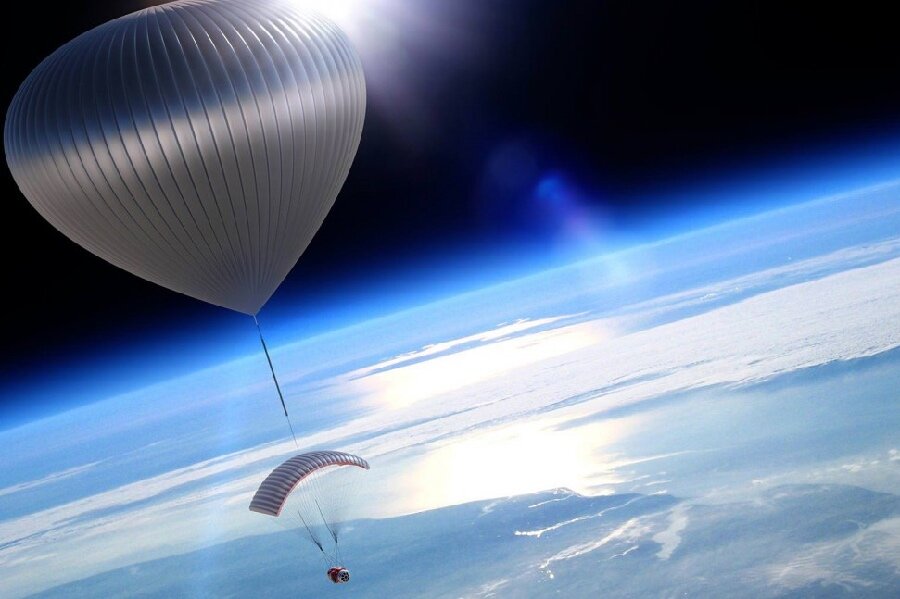How a former astronaut plans to use balloons to take people to the edge of space
Loading...
To get to outer space, one needs a multi-stage rocket. But to get close to space – an altitude above the Earth’s atmosphere, where the curvature of the Earth becomes visible and the blackness of space can be seen during the day – there are a few different options.
Some companies are testing reusable single-stage rockets. Others are using spaceplanes that can be carried to launch altitude by larger planes, then boosted into the upper atmosphere under their own power. And then there’s World View, a near-space exploration company that plans to send people to 20 miles above the surface of the Earth in capsules suspended from high-altitude balloons.
The capsules will ascend from a launch site in Tuscon, Ariz., to a height of 100,000 feet – which is about a third of the way to the Kármán Line, the generally-agreed-upon boundary between Earth and space. But World View balloons will rise higher than 99 percent of the Earth’s atmosphere and will allow passengers to stay at that altitude for two hours, taking in the curvature of the Earth and the blue halo separating the planet from the blackness of space.
World View says its goal is to instill people with a sense of wonder and a desire to protect the planet.
“They don’t call the company World View by accident; it is a transformative experience,” former astronaut Rob Garan, who this week signed on with World View as chief pilot, told Ars Technica. “Everything I’ve done since leaving NASA has been to figuratively transport people to let them see that big picture. Now … I can literally take them to the edge of space.”
The balloon itself, made of polyethylene film, will be about the size of a football field when inflated with helium; the pressurized cabin suspended below will be able to hold six passengers including the pilot. World View says it plans to begin commercial flights in 2017 following full-scale tests later this year.
That’s a more aggressive timetable than those followed by other suborbital tourism companies such as Virgin Galactic and XCOR Aerospace, but World View says that’s because the technology involved is already well-established. Weather balloons have been flying into the stratosphere, the atmospheric layer ending about 160,000 feet above the Earth’s surface, since the late 1800s.
World View has successfully tested smaller versions of the balloon capsule, and is now preparing an unmanned test of a full-scale prototype. A parafoil deployed below the balloon, seen in the picture above, will allow the pilot to glide the capsule through a relatively slow descent and a gentle landing – a far cry from the 24,000 m.p.h. reentry speeds experienced by the Apollo astronauts.
Suborbital tourism promises to be much cheaper than a trip to the International Space Station, for which a few wealthy individuals have paid up to $40 million. But it won’t be cheap: World View sells tickets for the trip to 100,000 feet for $75,000. Then again, the first near-space tourists will get to take in a view that only a handful of highly-trained people, most of them astronauts or cosmonauts, have ever seen before.








